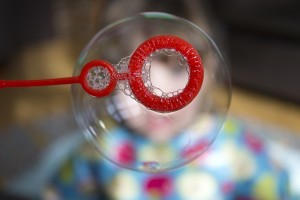Sometimes we consider stress as only an adult condition but people of all ages and backgrounds, including children face stress. Heading back to school might be exciting for many people. At the same time, it can also be stressful for children as well as adults. Many current studies about the effects of mindfulness practices on children are looking at curricula and trainings offered in the classroom. Although more research is needed, it appears promising that mindfulness can be taught to children and benefit children of different ages and backgrounds. The following list is just a few of the suggestions from Iowa State University Extension and Outreach on Helping Children Manage Stress.
Work off st ress through activities like bike riding, hiking, or swimming. At our house we used a basketball hoop as a way for our teenager to blow off steam. The basketball and hoop offered the opportunity for teenager and parent to get outside, move around, blow off some steam and often have a parent-child discussion that would have been taxing if we had been sitting down, inside across from one another.
ress through activities like bike riding, hiking, or swimming. At our house we used a basketball hoop as a way for our teenager to blow off steam. The basketball and hoop offered the opportunity for teenager and parent to get outside, move around, blow off some steam and often have a parent-child discussion that would have been taxing if we had been sitting down, inside across from one another.
In addition to the cardiovascular activities listed above like bike riding, hiking, swimming and basketball, why not include yoga as a physical activity to practice with children? If yoga is new for you as an adult, a children’s book or download makes it interesting and easy to understand for all ages and ability levels.
Encourage healthy eating; it makes young bodies better able to handle stress. Healthy eating may mean getting kids to try new foods. We have a young family friend who is working on tasting a variety of foods. She is leery of many foods so her challenge is to learn about new foods and consider tasting them. Her parents are actually teaching her mindful eating techniques that encourage her to study the color, the texture and the smell of the new food before putting it in her mouth. We were visiting a u-pick berry patch and she went through all those steps before tasting the fresh blackberry. I was happy that she enjoyed the blackberry! I couldn’t help but think of the mindful eating techniques that are being taught to her that many of us don’t employ in our adult lives. Her personal lessons on trying new foods remind me to slow down and savor and enjoy the food I am eating.
Show kids how to relax by remembering or imagining pleasant situations like a favorite vacation or happy experience. You can do this in a variety of ways. Ask your child about his or her favorite memories and use that as a starting point to relax and describe all of the senses such as the smells, the colors, the temperature, etc. If you would like to listen to a six minute guided download for older children, visit Relaxation for Children. The story has children breathing smiles into their bodies as they relax.
Teach kids that mistakes are learning opportunities and that everyone makes mistakes. Like it or not, this lesson is probably best taught by example. Jon Kabat Zinn defines mindfulness as “paying attention in a particular way: On purpose, in the present moment, and nonjudgmentally.” We must be nonjudgmental about mistakes – including our own – to truly use those mistakes as a learning opportunity. Parents and caregivers who practice mindfulness(PDF) increase the likelihood that they and their children will have a happier family life.
Tell or read stories that show a child successfully coping with stress. Depending on the age of the child and the stress they face, a quick search at the library can provide some stories about children coping with stress. Unlike adult books on stress, which sometimes have a more technical approach, a children’s book will more likely feature relatable characters with a whimsical or funny message. A child’s book might offer comfort to the adult as well! I’ve found some children’s stories to be good reminders to me.
Model ways to handle stress — exercise daily, eat healthy, relax with hobbies, and encourage mealtime sharing. And don’t forget to breathe. Just as we have to remind ourselves of this as adults, we can teach our children how to breathe deeply as a way to calm during busy days. It is a job and privilege to model healthy living to children. Not only is it good for them, it is also good for us!

